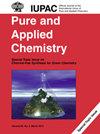柔性聚合物网络:橡胶弹性和段定向
IF 2
4区 化学
Q3 CHEMISTRY, MULTIDISCIPLINARY
引用次数: 0
摘要
热可逆网络是非常有吸引力的材料,因为有大量合适的热可逆化学键可用于交联。未来,在一定程度上,它们可能会取代迄今为止使用的不可逆交联网络,并在交联弹性体领域为更可持续的材料概念做出贡献。本文为理解交联聚合物的弹性变形特性提供了一些理论依据,并介绍了一些实验工具,用于研究不仅在宏观长度尺度上,而且在分段尺度上的变形行为。这两个主题的基础知识对于化学家和材料科学家设计新型可持续弹性聚合物网络非常有用。本文章由计算机程序翻译,如有差异,请以英文原文为准。
Flexible polymer networks: rubber elasticity and segmental orientation
Thermoreversible networks are very attractive materials because of a large variety of suitable thermoreversible chemical bonds which can be used for crosslinking. In future, to certain extent, they may replace so far used irreversibly crosslinked networks and contribute to more sustainable material concepts also in the field of crosslinked elastomers. This paper gives some theoretical basis for understanding the elastic deformation properties of crosslinked polymers and presents some experimental tools for studying deformation behavior not only on a macroscopic length scale but also on a segmental scale. Basic knowledge of these two topics is useful for chemists and material scientists when designing new sustainable elastomeric polymer networks.
求助全文
通过发布文献求助,成功后即可免费获取论文全文。
去求助
来源期刊

Pure and Applied Chemistry
化学-化学综合
CiteScore
4.00
自引率
0.00%
发文量
60
审稿时长
3-8 weeks
期刊介绍:
Pure and Applied Chemistry is the official monthly Journal of IUPAC, with responsibility for publishing works arising from those international scientific events and projects that are sponsored and undertaken by the Union. The policy is to publish highly topical and credible works at the forefront of all aspects of pure and applied chemistry, and the attendant goal is to promote widespread acceptance of the Journal as an authoritative and indispensable holding in academic and institutional libraries.
 求助内容:
求助内容: 应助结果提醒方式:
应助结果提醒方式:


